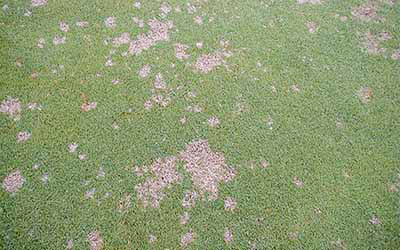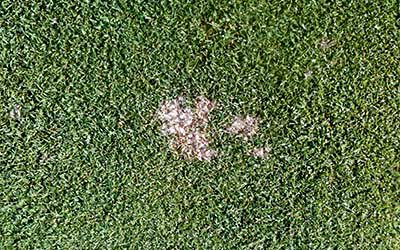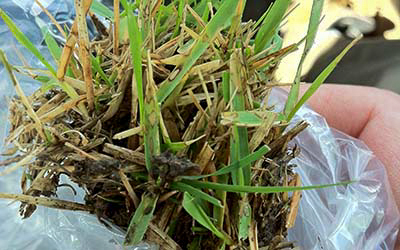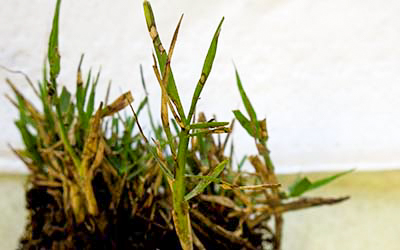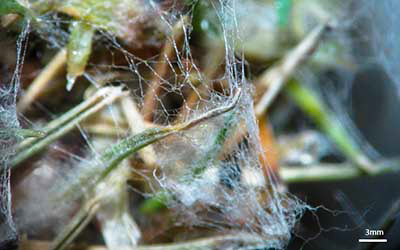Sclerotinia homoeocarpa
![]()
![]()
![]()
![]()
![]()
![]()
![]()
Hosts
All grass species except tall fescue; most damaging on creeping bentgrass and Kentucky bluegrass
Disease description:
Due to its wide host and temperature range, dollar spot is the most common disease of turf worldwide. The disease can occur from April to November in Missouri, with most new infections occurring during heavy dew events when high temperatures range from 60 to 90 degrees F. On putting greens, dollar spot appears as round tan to bleached patches that only reach 1 to 2 inches in diameter. Spots can merge to result in larger areas of damage. On longer-cut turf, spots can grow to 6 inches or more in diameter. Longer leaves normally stay upright and are straw-colored. A characteristic hourglass-shaped straw-colored lesion can be seen girdling newly infected leaves along spot margins. In the early morning during heavy dews or high humidity, pathogen mycelium can be observed on top of infected leaves on greens or within the canopy of longer-cut turf.
Control
Dollar spot is more prevalent and severe on underfertilized turf, so maintaining adequate nitrogen fertility is critical. Nitrogen applications, particularly in the fall when Brown patch and Pythium are nonissues, can prevent disease outbreaks or encourage recovery. Limit leaf wetness duration by irrigating early in the morning or by removing dew with mowing, rolling, hose dragging or other dew-removal practices. Because a dollar spot epidemic can progress rapidly, preventive fungicide or very early curative applications are necessary to limit damage on high-amenity turf.
Images

